Use this 12-move yoga for weight loss routine to boost your metabolism and build a stronger core
This short yoga for weight loss routine strengthens your core, works your muscle, and raises your heart rate to help you hit your goals
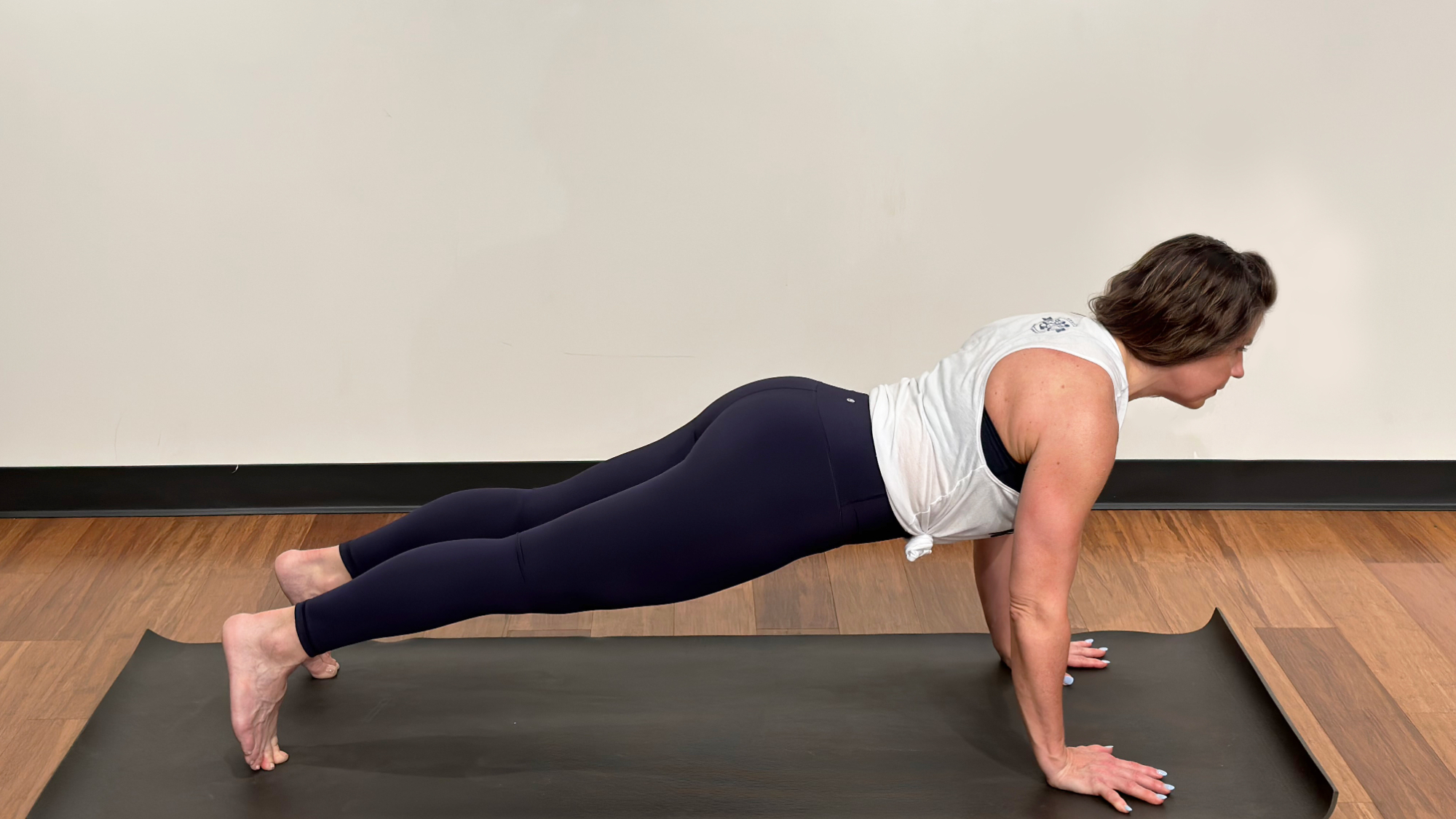

If you've been considering yoga for weight loss, the practice can be a great way to connect with your body, perform dynamic poses to raise your heart rate, and work your muscles to increase your metabolism.
Unlike gym workouts, you don't need a lot of equipment, just one of the best yoga mats with a grippy surface for comfort and support as you transition between poses. Then you can practice your technique, strengthen your muscles, and hit your goals.
While yoga isn't a high-intensity calorie burner, and won't be as effective for building muscle that resistance training, its a great complement to the best exercises for weight loss and, importantly, can also promote a sense of wellbeing.
To help you get started, we spoke to Wendy Cope, a yoga teacher and group fitness trainer, to develop a short yoga for fat loss routine, inspired by the Yoga Body Sculpt class at Crunch Fitness, to raise your heart rate, strengthen your muscles, and make you feel strong and powerful in your body.
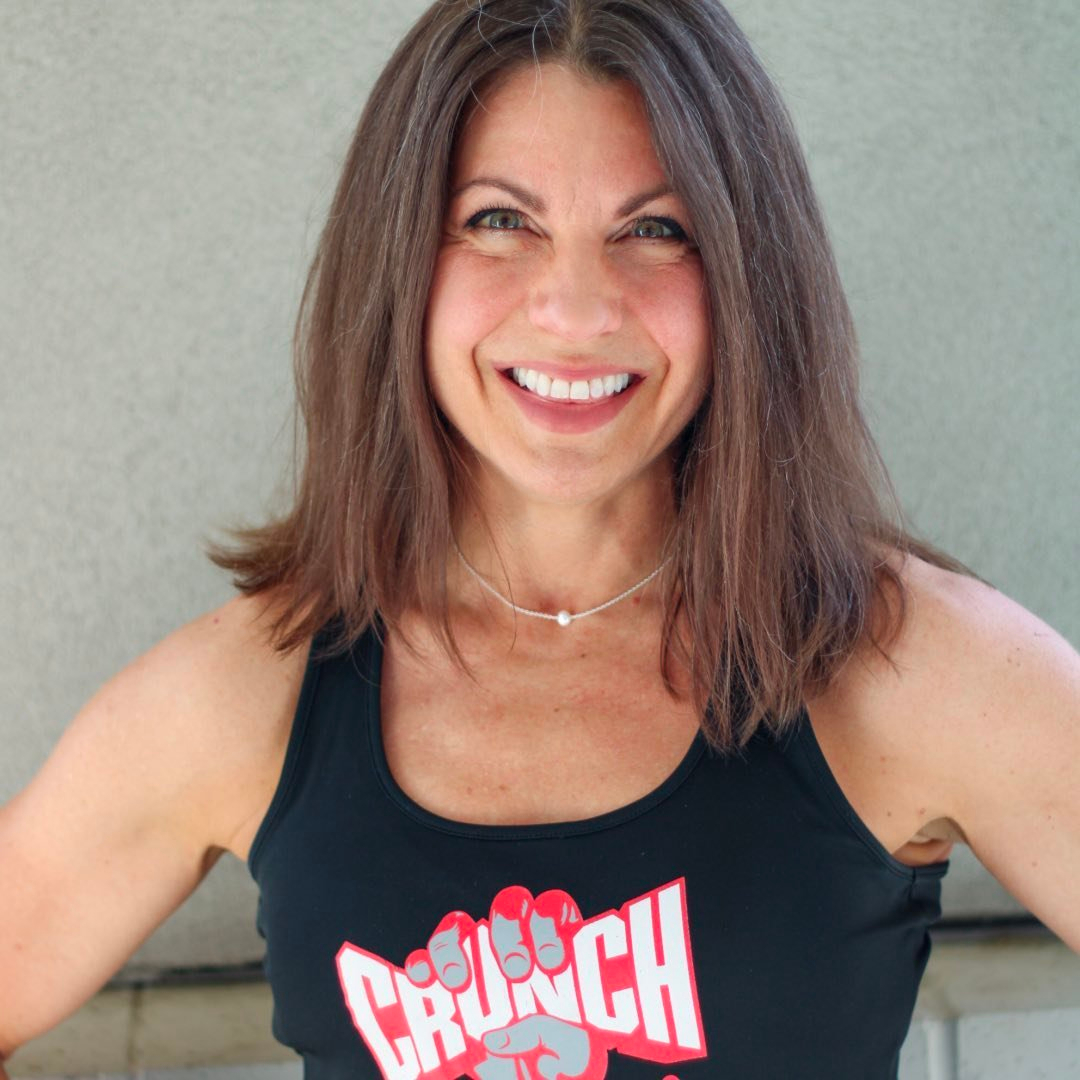
Wendy Cope is a Yoga Alliance accredited yoga instructor, Crunch franchise National Master Trainer, and holds a group fitness instructor certification from the American Council on Exercise (ACE).
12-move yoga for weight loss routine
This short, 12-pose yoga for weight loss routine is designed to work muscles all over your body, in a similar way to compound exercises, and raise your heart rate to boost your metabolism (the amount of energy you burn throughout the day).
Cope has set it in a yoga flow format, so each pose transitions into the next without you needing to reset between movements. The sequence as detailed here is for your right side, and once you reach the end, repeat the 12 moves on the left side.
When learning the sequence, take at least three mindful breaths (in through the nose, our through the mouth) for each move to allow the body to feel the posture and develop a sense of calm around each pose.
Get the Fit&Well Newsletter
Start your week with achievable workout ideas, health tips and wellbeing advice in your inbox.
This will help strengthen your mind-muscle connection and make you more aware of how your body feels. Once you're comfortable with the routine, you can try it at a breath-to-movement pace known as vinyasa.
1. Mountain pose
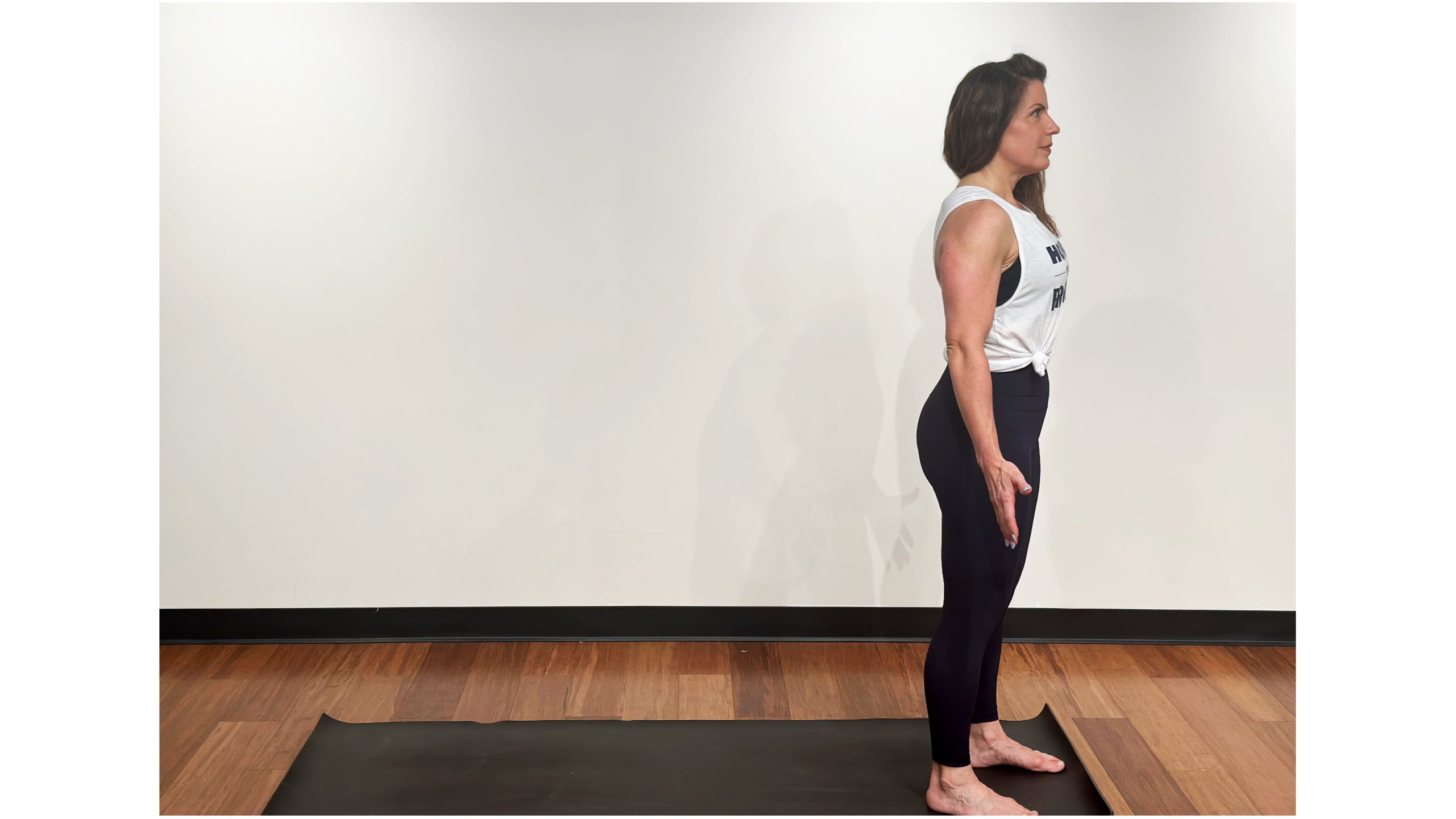
“This pose grounds and elongates the body, allowing for full, complete breaths and excellent posture,” says Cope.
- Feet are shoulder-width apart, toes spread and grounded, with the crown of the head towards the sky. Roll the shoulders back and down away from the ears.
- Reach down with your fingers, palms facing out. Lift the kneecaps to strengthen the quadriceps, tuck the pelvis under, and pull the navel slightly into the spine to engage the core.
- Inhale and exhale through the nostrils.
2. Knee raise balance
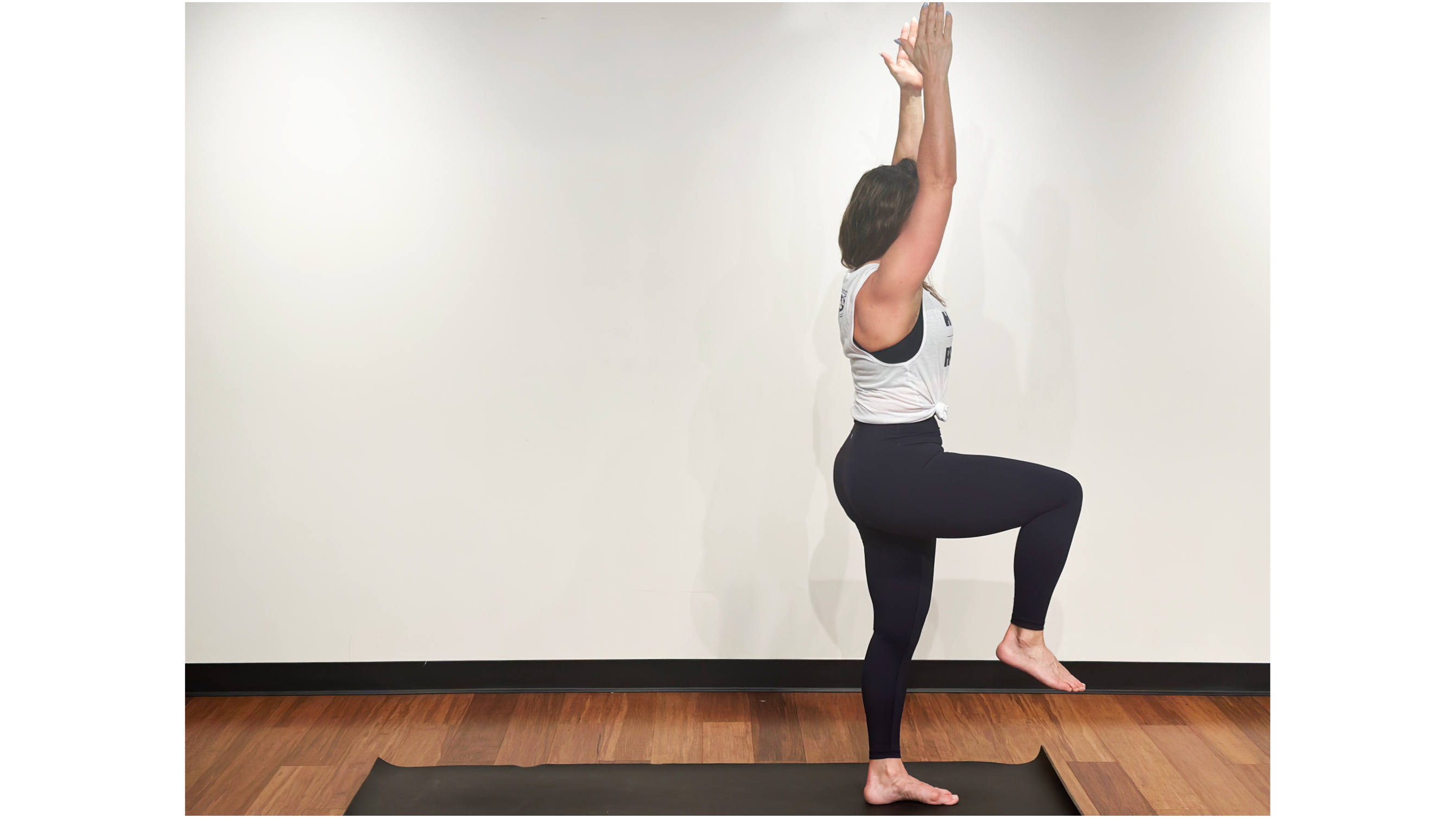
This posture fires up the core muscle and activates the glutes, quads, hamstrings, and feet.
If you want to stabilize your balance, there's an option to keep the toe slightly grounded or lifted slightly above the ground. Alternatively, if your knee is raised to hip height, raise the arms overhead to challenge your balance even more.
- Ground down with the left foot, pressing through the big toe, pinky toe and heel.
- Inhale and lift the right foot off the ground to activate the core and test your balance. Lift the knee, maintaining your balance and breathing.
3. Warrior 3 to knee raise balance
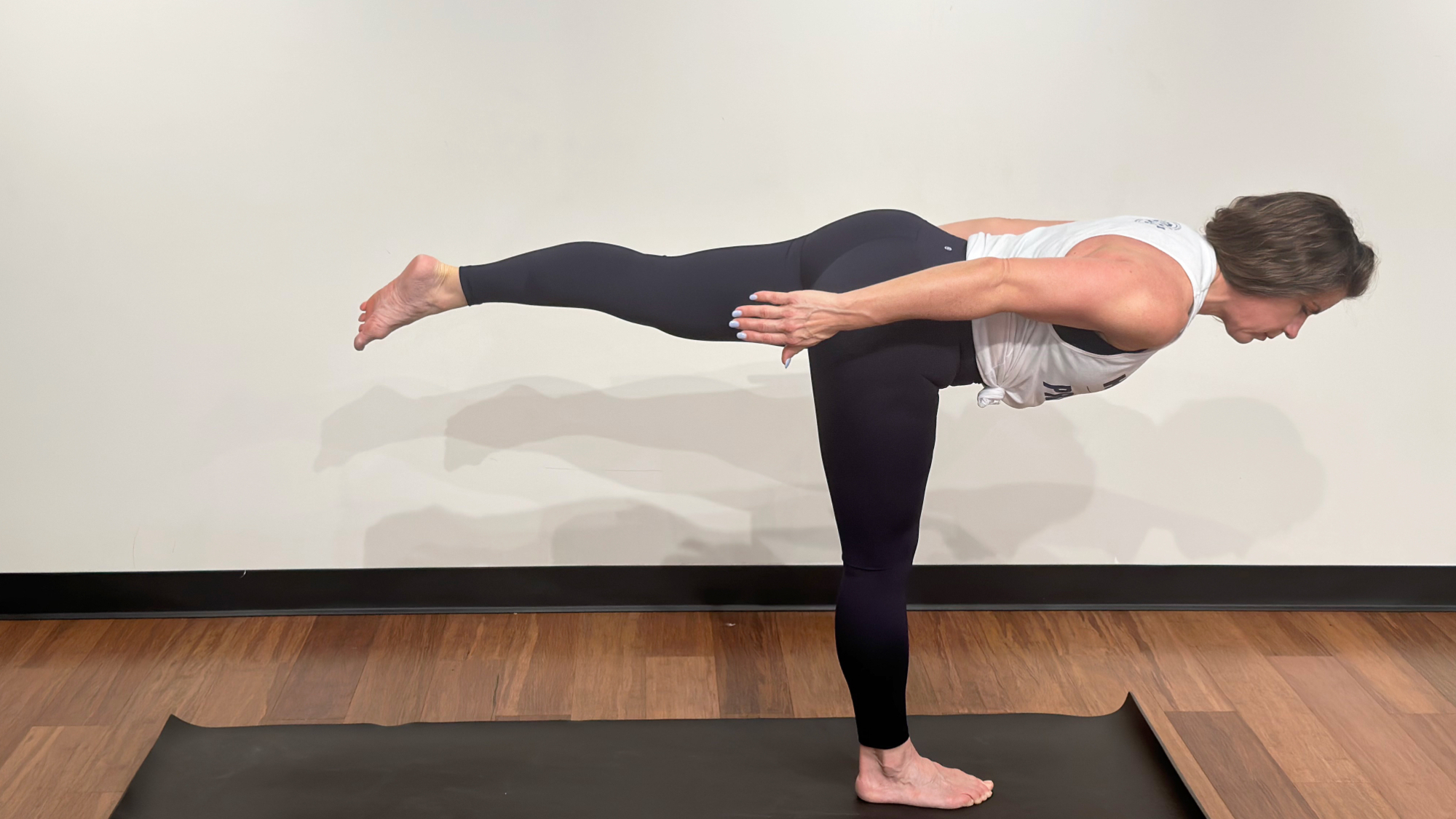
Warrior 3 challenges your balance even more, which raises the heart rate, firing up the metabolism (the amount of energy you burn throughout the day).
This pose also builds strength through all the tiny muscles in the lower leg and feet, and activates the glutes, quads, hamstrings and core, according to Cope. Make this move more challenging by reaching the arms forward to activate the upper body.
- Maintain the knee raise balance, and as you exhale, shoot that right knee backwards so you end up in a table-top position. Tilt forward as much as you can to challenge your balance. Your arms can go back behind you for more stability or over your head for more of a challenge.
- On an inhalation, control that same right knee back up to balance. This requires even more core control to raise your body to standing. Take your time and ground your standing leg foot into the floor.
4. Chair pose
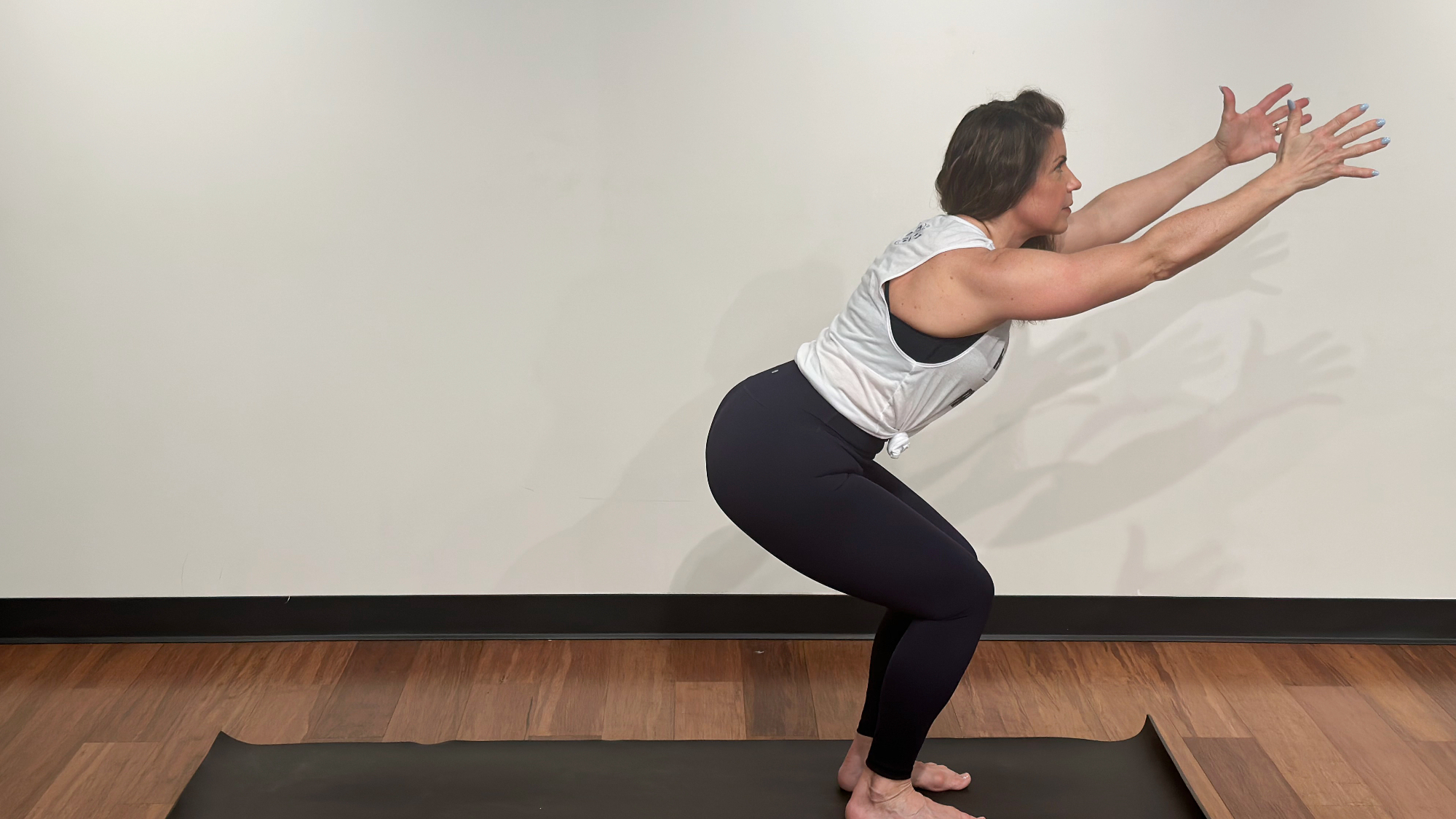
Chair pose is also known as fierce pose in yoga. “Holding a low squat like this for a few breaths will raise the heart rate and sculpt the muscles of the lower body,” says Cope.
- Exhale with feet hip-distance apart, sitting back into the heels as if lowering into a chair with arms extended in front.
- Relax your shoulders as you continue reaching back with your glutes while reaching forward and up with your arms.
5. Twisted chair
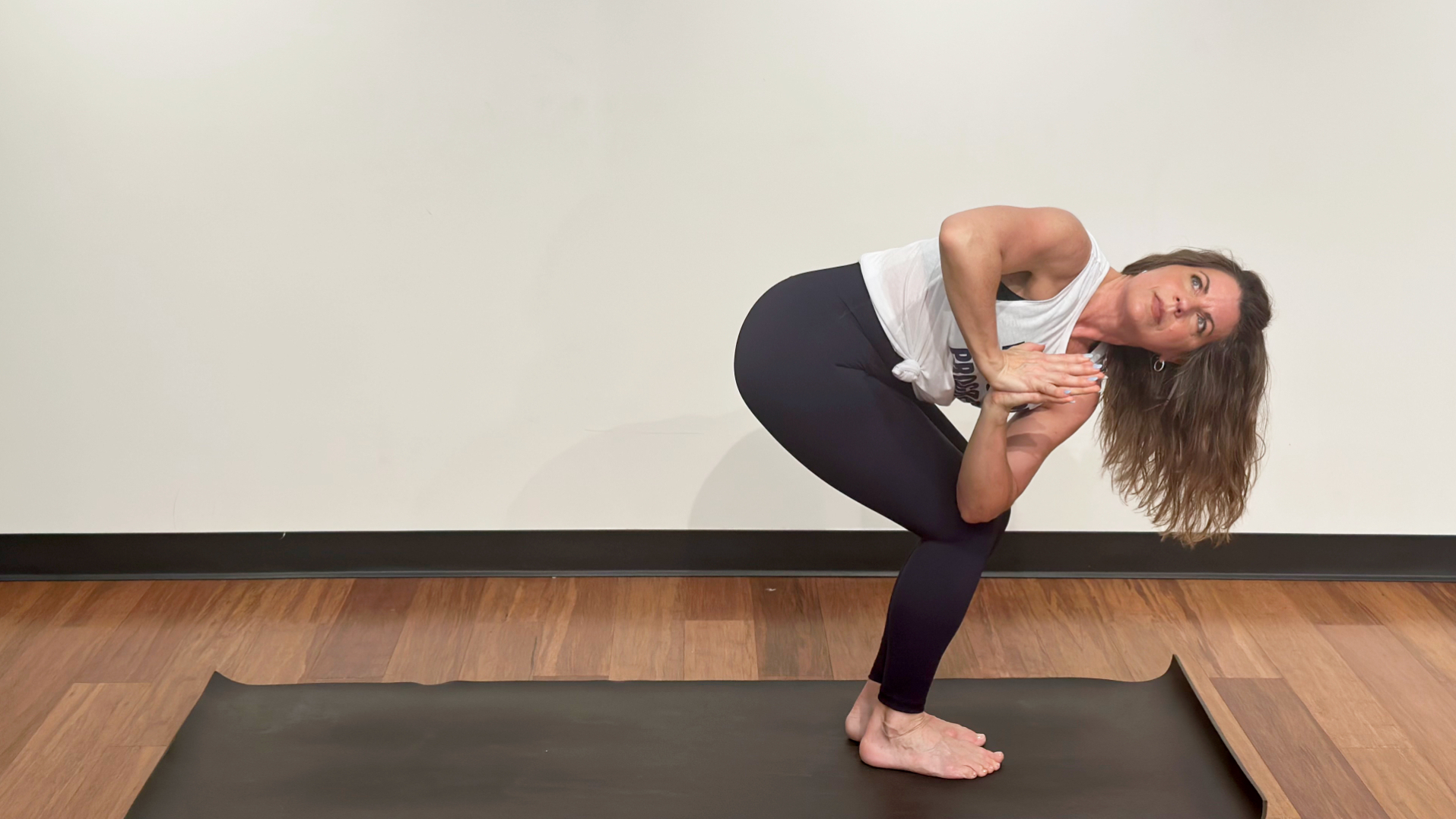
According to Cope, the twisted chair is one of the best postures for digestion and detoxification. “Wringing out the internal organs can help the body metabolize fat more efficiently,” she says.
- Stay in chair pose. and as you inhale, bring the palms together in a prayer pose, elbows making one straight line across your body.
- On the exhale, twist from the tailbone towards the right knee and, if possible, hook your left elbow around the outside of the thigh.
- If this doesn't feel right for your body, instead of hooking the elbow around, place your left hand on the outside of the right thigh.
6. Twisted lunge
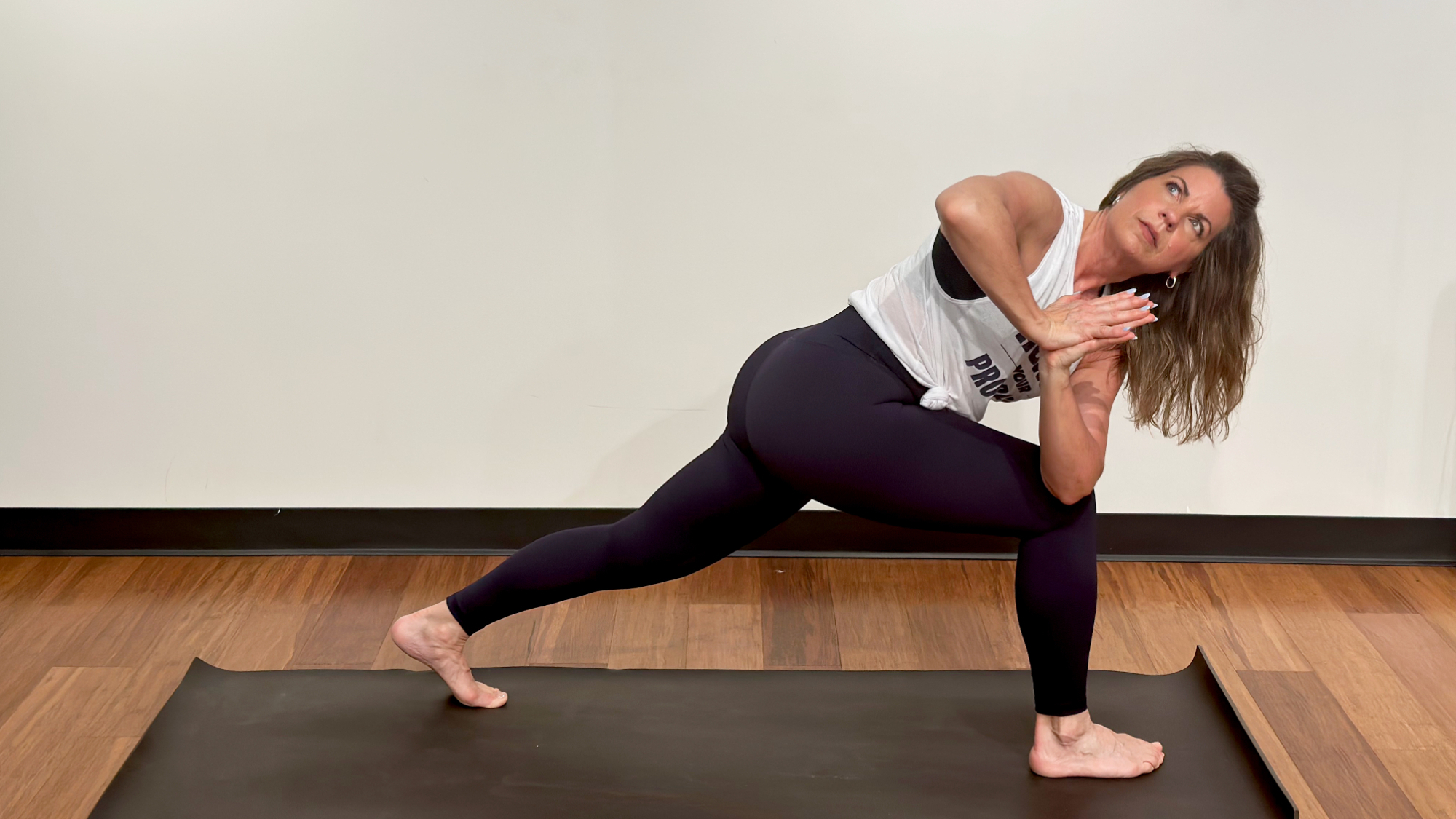
“Maintaining the twist here challenges your core and focus, and it helps eliminate toxins from your system,” says Cope.
- While still in the twisted chair pose, shift your weight into the right foot.
- On an exhale, step the left foot back into a lunge.
7. Warrior 2
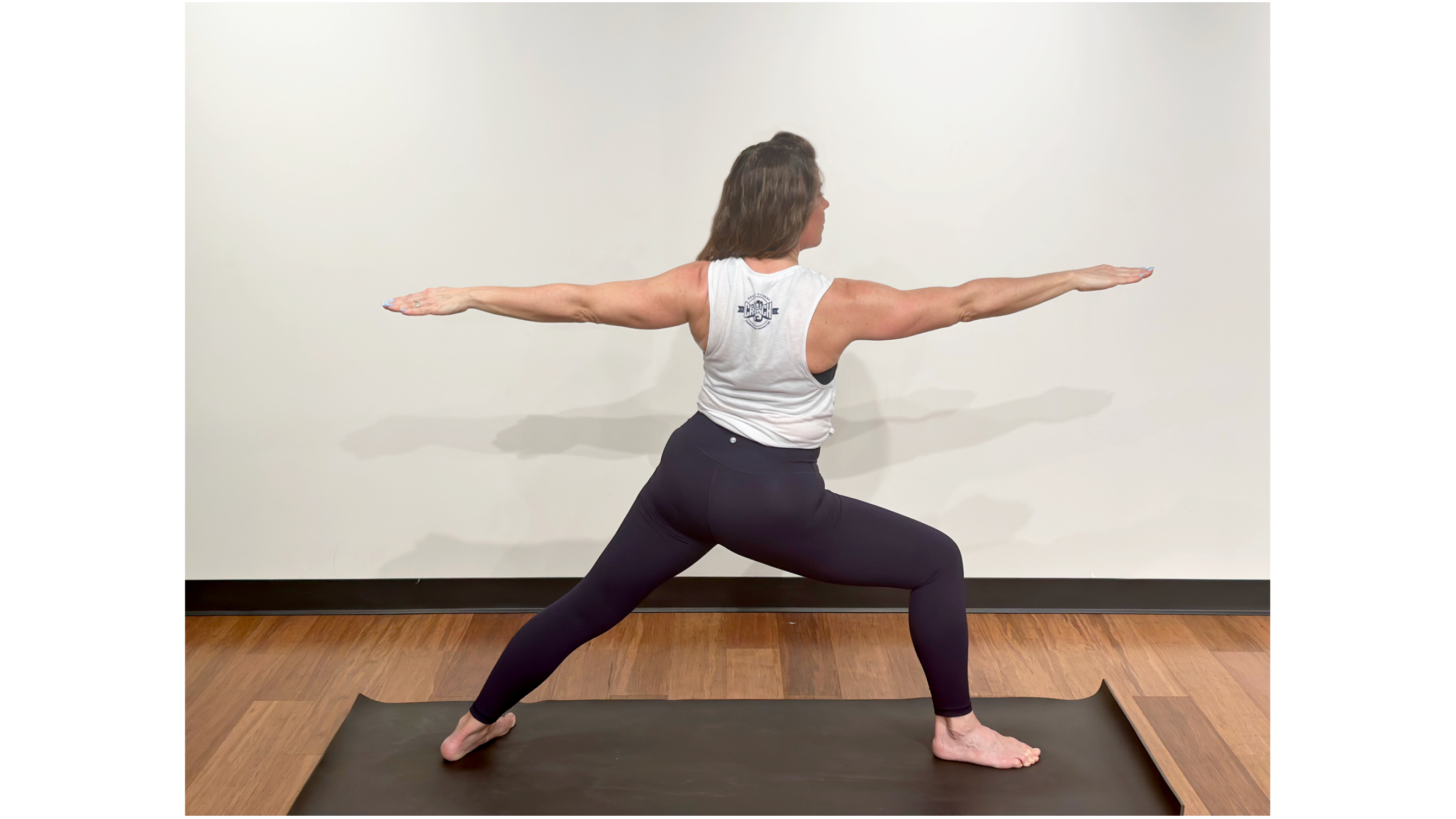
According to Cope, the benefits of Warrior 2 include strength and balance throughout the body, especially the quadriceps, glutes, calves, shoulders, arms, and back.
- From your twisted lunge position, on an inhale, spin your back foot into the ground and untwist your arms and extend to shoulder height, with palms facing the floor.
- Exhale and sink down further into the stretch, keeping your shoulders over the hips.
8. Reverse Warrior
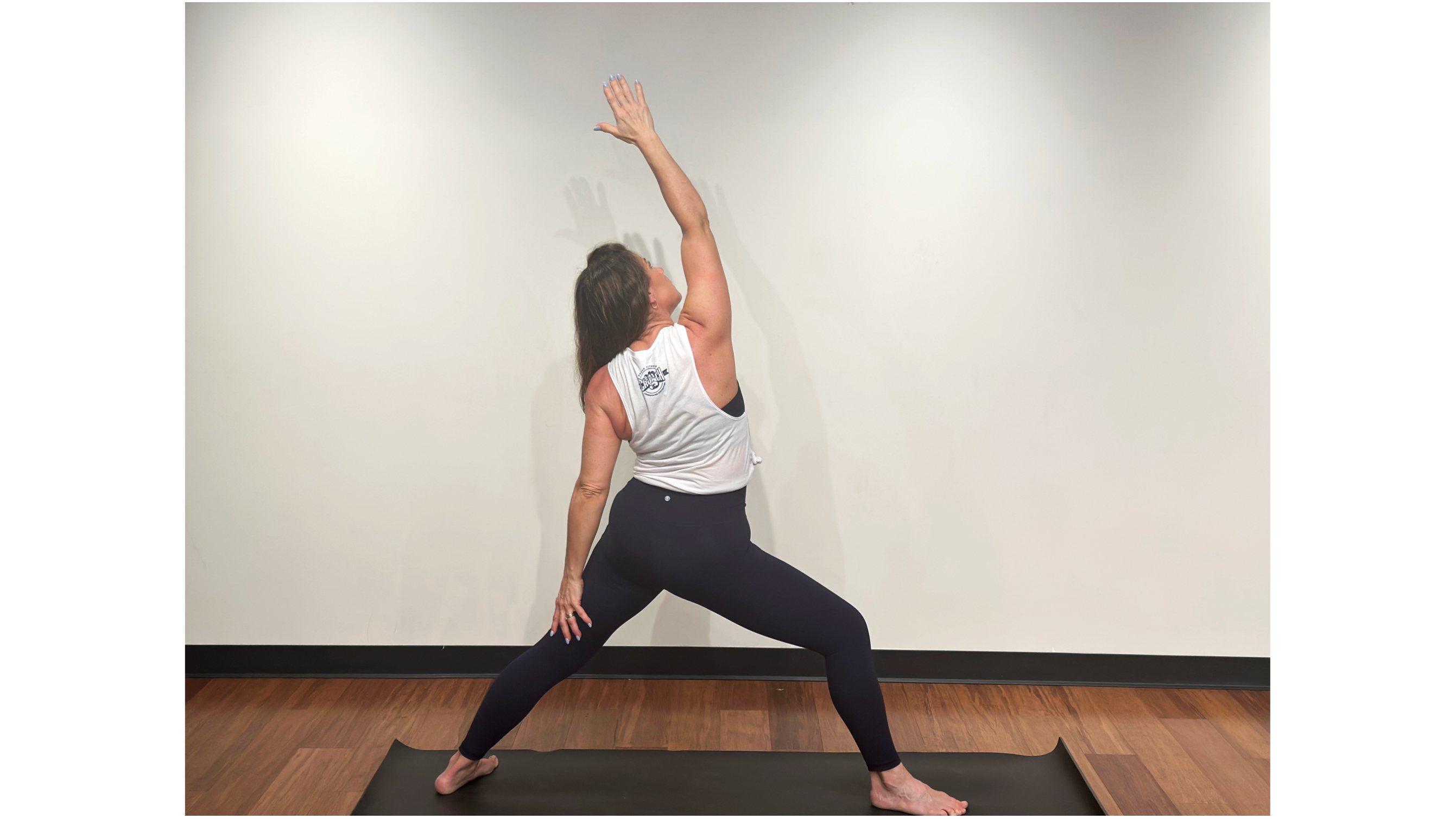
“Reverse Warrior improves spinal mobility and stretches the muscles of the ribcage, allowing for more oxygen to fuel the muscles,” says Cope.
- While in Warrior 2 position, inhale and place your left hand on your left thigh and raise the right hand to the ceiling, taking a slight backbend.
9. Low lunge twist
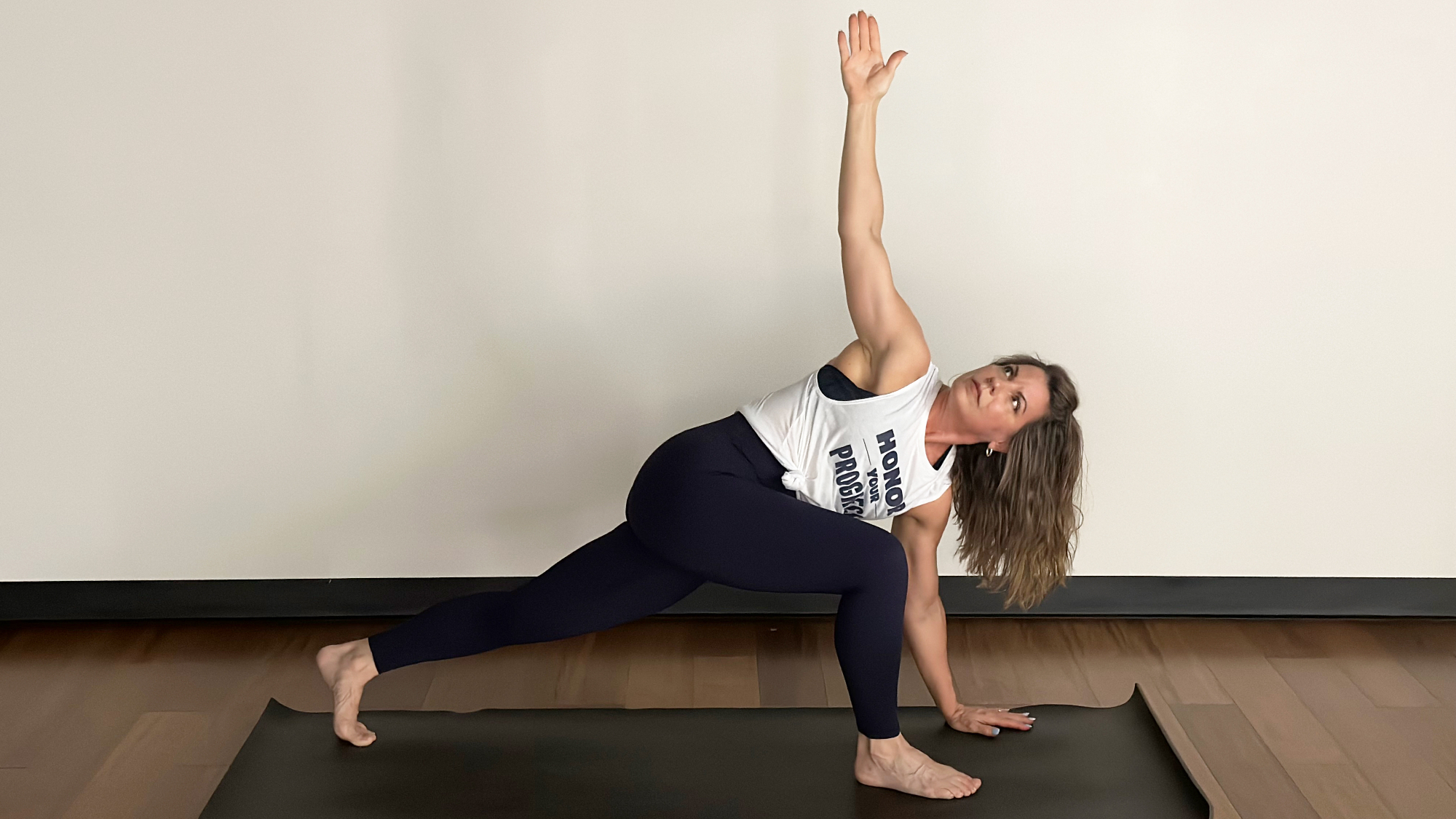
Cope says that returning to the twist after a period of openness improves digestion and detoxification of the internal organs.
- Starting in your reverse Warrior pose, exhale and cartwheel your left hand to the ground next to your right knee, bending the left knee into the ground.
- Twist your body towards the knee, raising your right hand to the ceiling.
10. Side plank
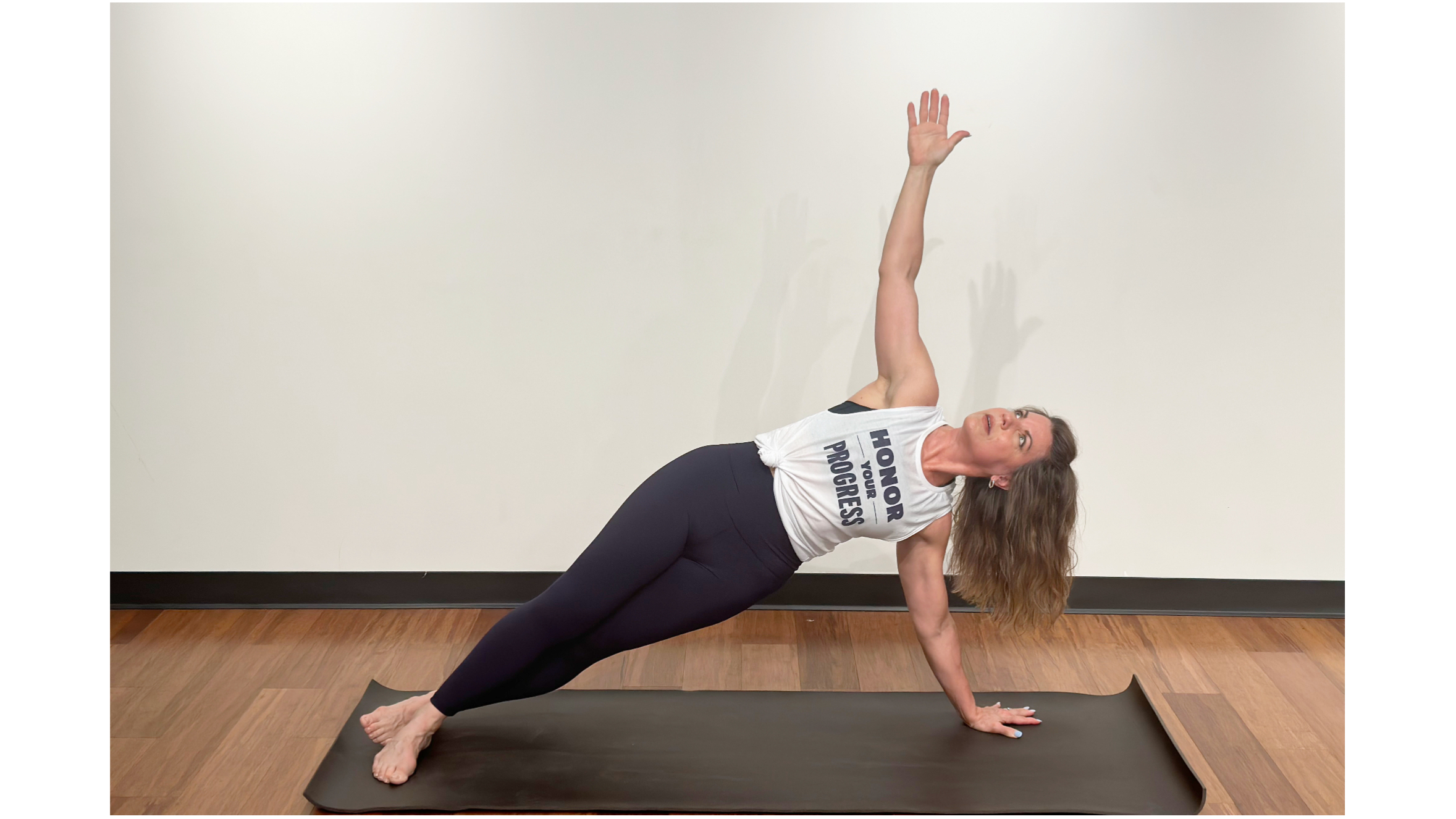
“Side plank fires up the oblique muscles of the core, providing stability and support throughout the body, but especially for the hips and back,” Cope says.
The pose can be quite intense, so drop the bottom knee or stagger the feet for more support, or challenge yourself by raising the right leg off the ground above the left leg.
- From your low lunge twist, place both hands on the ground and step back with your right leg, hips stacked on top of each other.
- On an inhale, extend the right arm to the sky.
11. Plank

The plank works muscles all over your body, according to Cope, improving stability and strength and helping to prevent injury.
Like with the side plank, you can drop the knees to the floor for support or keep the right leg lifted for an additional challenge.
- To come out from side plank, place your right hand on the floor under the right shoulder and square the hips towards the floor.
- Hold this plank position, keeping shoulders, hips, and heels in one straight line, with the core braced.
12. Downward-facing dog
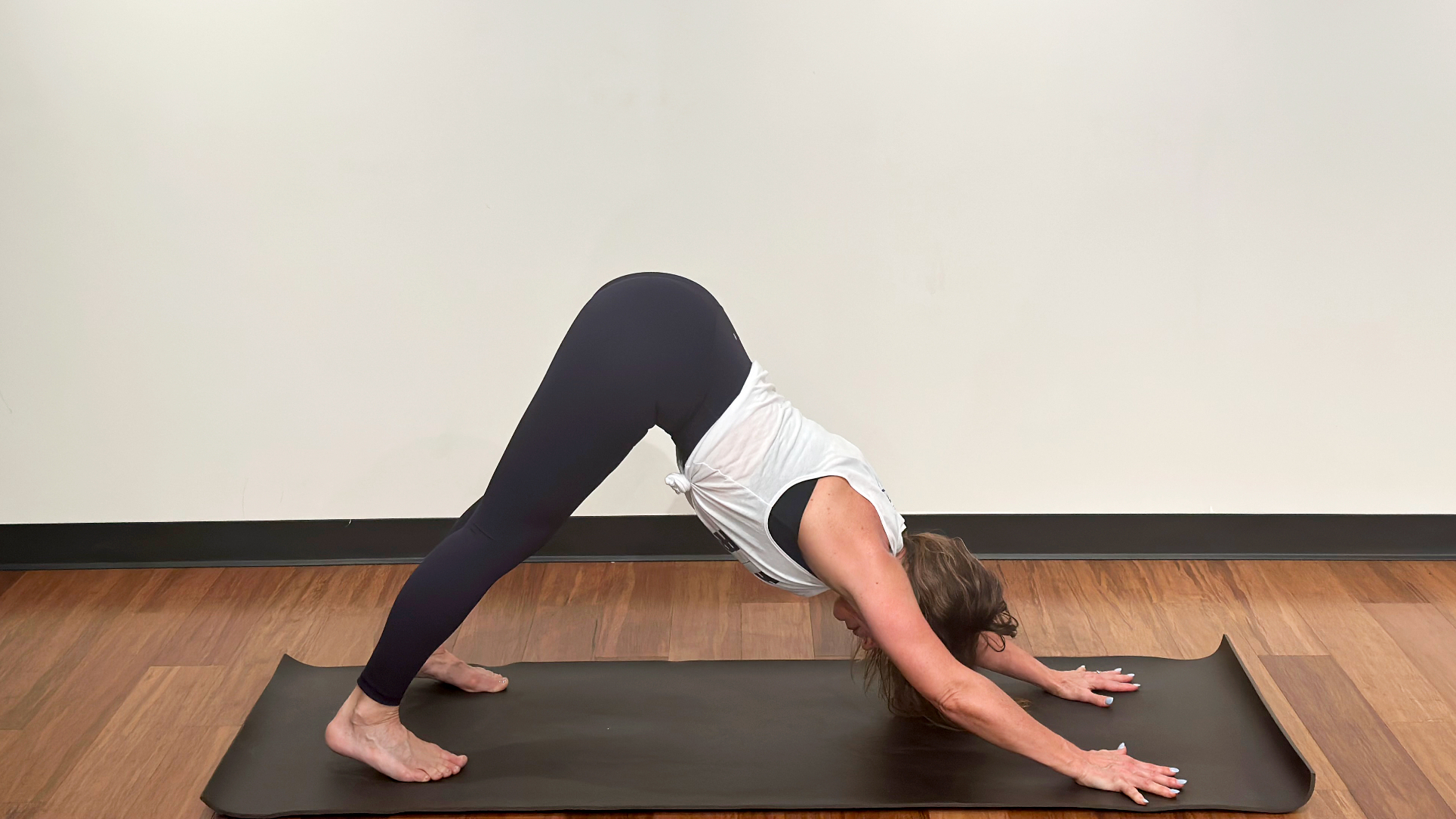
Downward-facing dog strengthens your arms and shoulders, and lengthens the hamstrings and back, says Cope. “It also improves circulation and relieves stress," which is why it's also a great yoga pose for anxiety.
- From plank position, exhale and raise your hips towards the sky, with your shoulders pulling towards your hips and away from the ears.
- Plant the hands firmly into the ground and reach with the heels towards the floor. Take three deep breaths, then bend the knees and jump, step, or walk the feet between the hands.
This yoga for weight loss routine is best used as a part of an broader exercise program. Doing this sequence every day would mean that you get the benefits of yoga, but you'll need to do other activities to achieve your weight loss goals.
However, research published in Evidence-Based Complementary Alternative Medicine found that practicing yoga led to a shift toward eating healthily, a positive impact from the supportive yoga community and culture, and the participants noticed beneficial physical and psychological changes.
Overall, they felt that the yoga weight loss experience was different than past weight loss attempts; all which they believed helped them succeed. You may find that taking on a morning yoga routine helps start your day right, making it easier to eat well, and feel like you can do a more dynamic workout later on.
If you enjoy working out at home, rather than at the gym, then it's a good idea to invest in some of the best adjustable dumbbells and kettlebells. These weights are adaptable and you can use them in most resistance training workouts to give yourself a full-body workout and raise your heart rate.
While building muscle can burn fat, it may be that you prefer high-intensity cardio-focused routines instead. In that case, you could take on this short HIIT workout for fat loss to raise your heart rate, burn fat, and boost your metabolism with no equipment at all.
Rachel is a lifelong health and fitness enthusiast with 15 years of experience, a certified personal trainer, and a fitness writer with bylines at Livestrong, Verywell, and Insider. She is passionate about clearly and accessibly communicating actionable and science-based fitness advice. Alongside her writing, Rachel also holds several certifications, including nutrition, prenatal/postpartum exercise, and pain-free performance. She lives in coastal Eastern Canada, and her hobbies include jiu-jitsu, hiking, and trips to the beach.
-
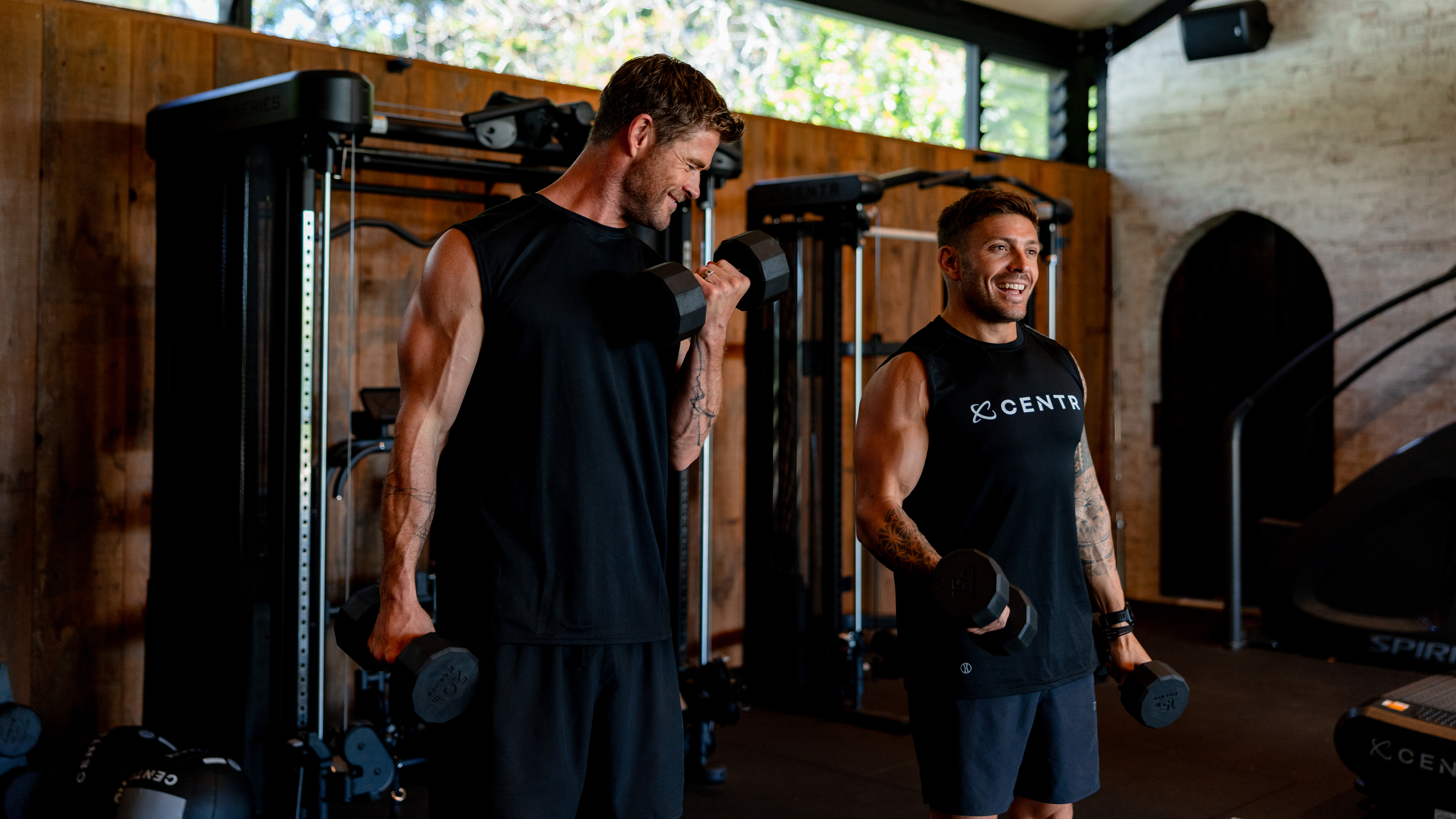 Build blockbuster arms and abs with Chris Hemsworth's go-to dumbbell circuit
Build blockbuster arms and abs with Chris Hemsworth's go-to dumbbell circuitAll you need are adjustable dumbbells and 20 minutes
By Sam Rider Published
-
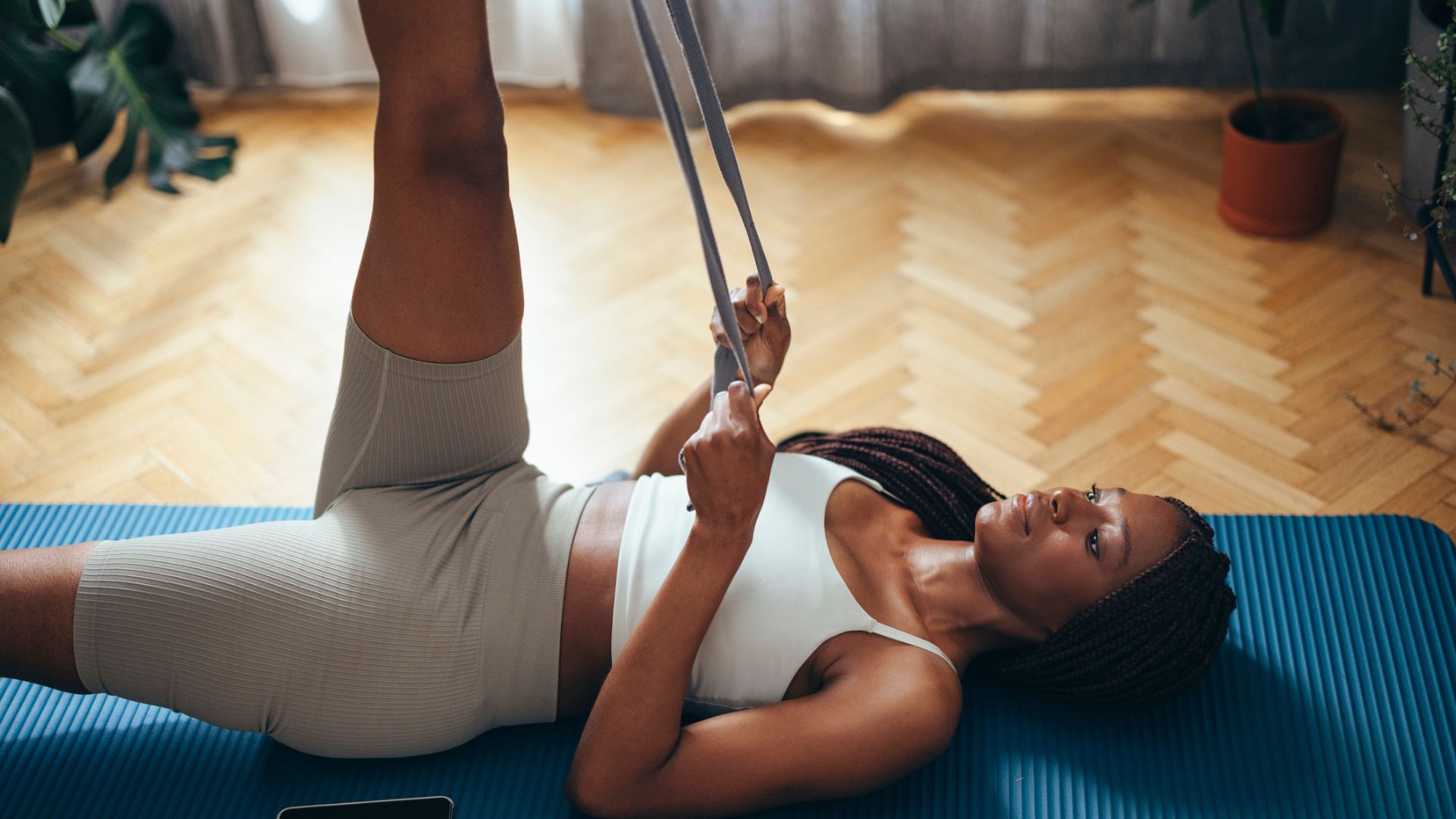 Forget crunches—if I wanted to improve core strength I'd do this neck-friendly Pilates workout
Forget crunches—if I wanted to improve core strength I'd do this neck-friendly Pilates workoutAnd it takes just five minutes
By Maddy Biddulph Published